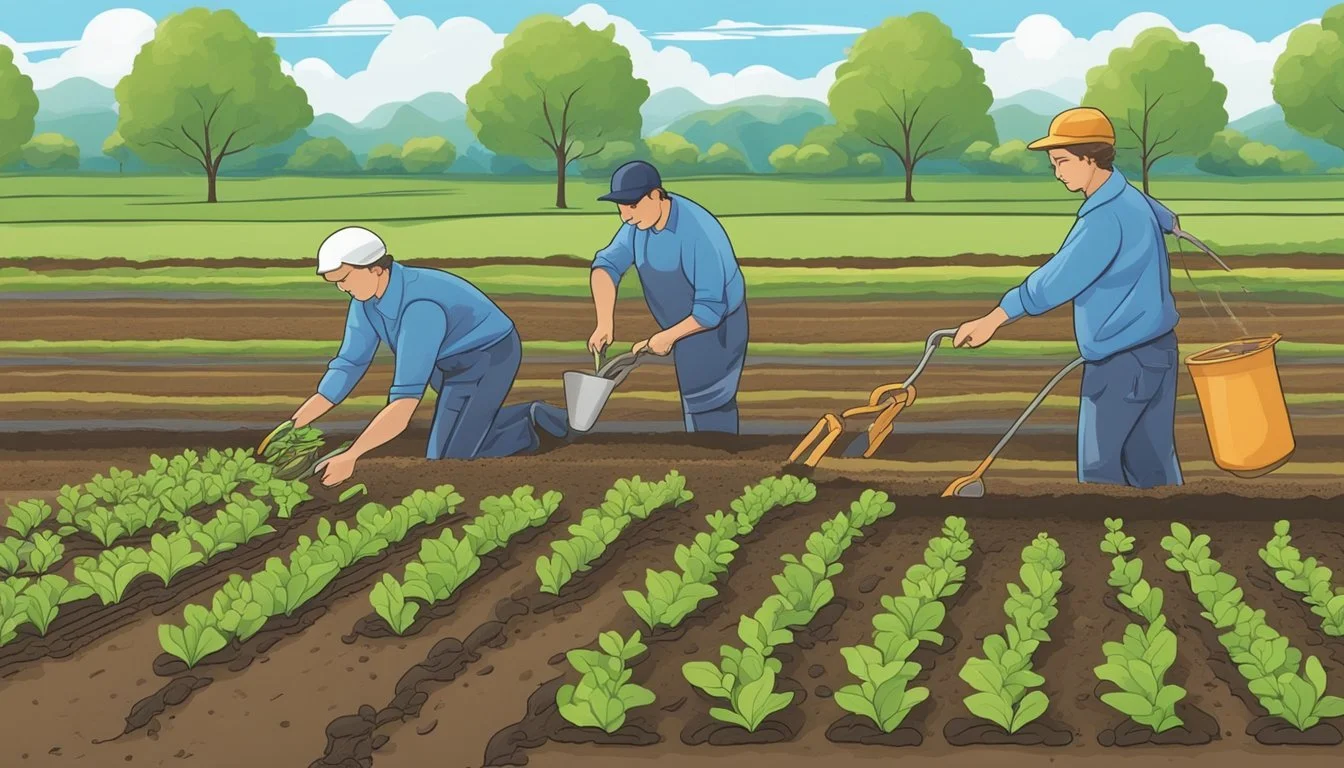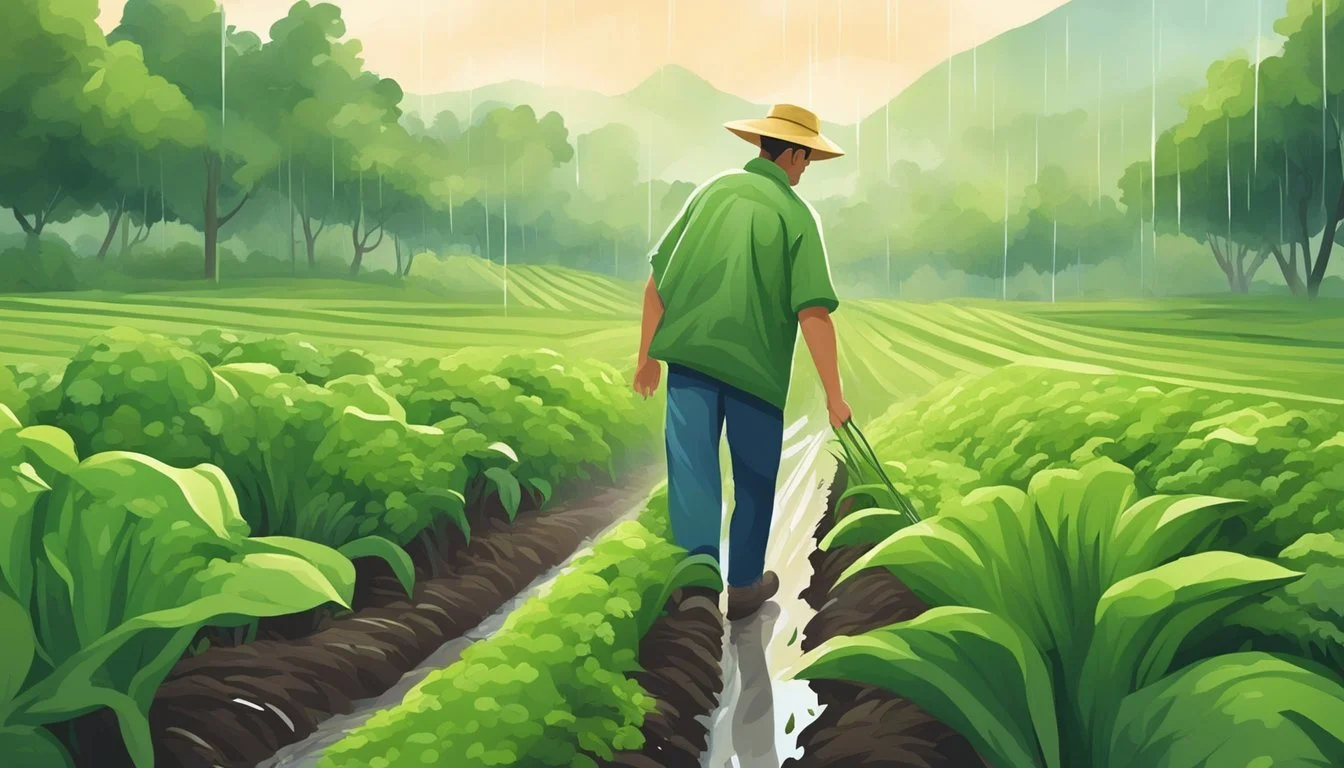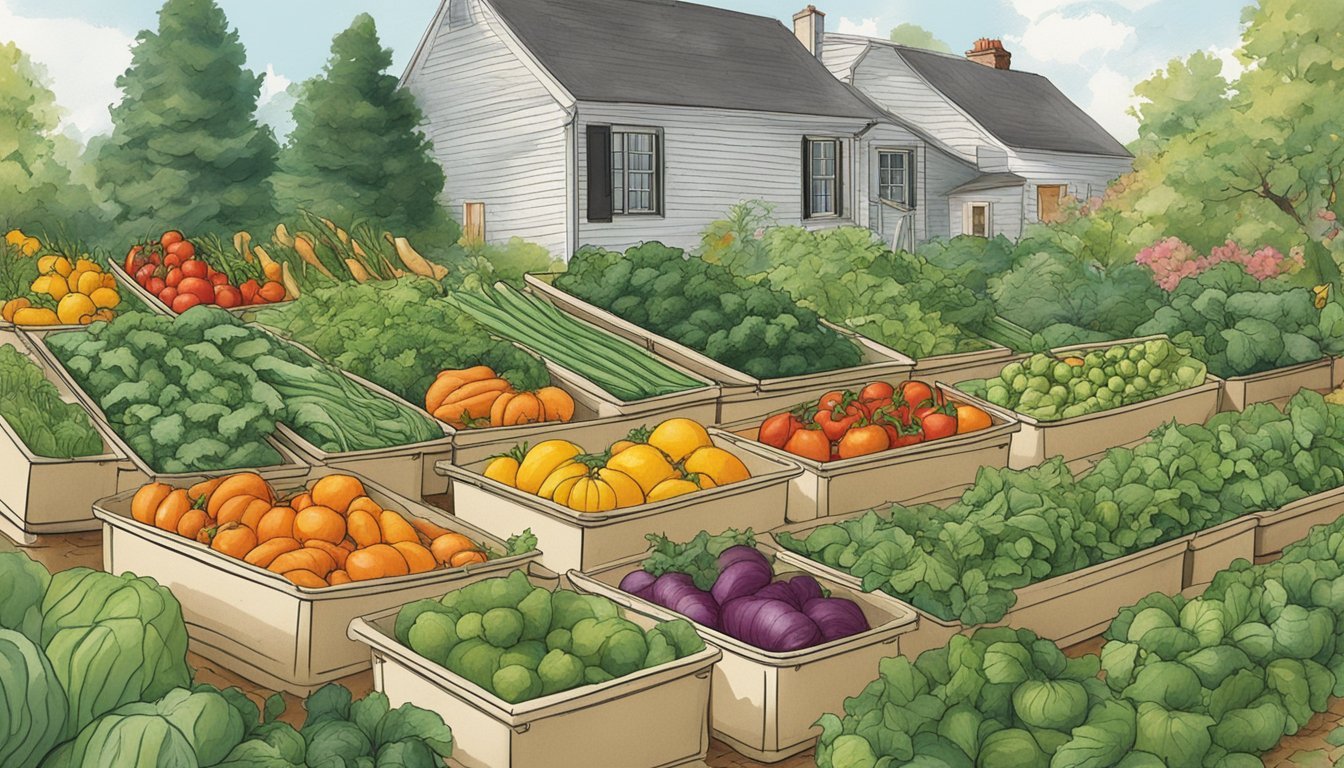Vegetable Gardening in Wisconsin
A Seasonal Guide for Beginners
This Article is Part of Our Guide on Vegetable Gardening by State
Vegetable gardening in Wisconsin offers a rewarding experience for green thumbs and novices alike, thanks to the state's diverse climate and fertile soil. Wisconsin's cold spring and cooler fall months create an ideal environment for cold-hardy vegetables like lettuce, which can thrive even in the presence of snow or frost. The state's seasonal weather patterns are conducive to growing a variety of vegetables that are well-suited for the unique challenges and advantages presented by the local climate.
Gardeners in Wisconsin have access to a variety of resources ranging from metal raised garden beds and advanced watering systems to comprehensive guides provided by the University of Wisconsin - Madison Division of Extension. These resources are designed to assist in site selection, soil preparation, and the prevention and control of common diseases and pests that affect vegetable crops in the region. Whether one is just starting their garden or looking to improve their existing plots, the educational materials and products available can help maximize their chances of a bountiful harvest.
Understanding the planting calendar is crucial for success in vegetable gardening in Wisconsin. Timing is everything, and planting dates can greatly affect the yield and health of vegetable crops. Given Wisconsin's variable weather, utilizing local planting calendars, such as those provided by reputable gardening almanacs, is essential. These calendars take into account the specific region's last frost dates and optimal planting windows, ensuring that gardeners can plan their vegetable gardens with confidence and precision for the best possible outcomes.
Selecting Suitable Vegetables for Wisconsin
In Wisconsin, vegetable gardening success hinges on choosing plants well-suited to the local climate and hardiness zones.
Understanding Hardiness Zones
Wisconsin spans several plant hardiness zones, from zone 3 in the northernmost areas to zone 5 in the southern regions. These zones are crucial for determining the types of vegetables that will thrive in the variable Wisconsin climate. Zone 3 showcases shorter growing seasons, while zone 4 and zone 5 provide progressively longer ones, allowing a wider variety of hardy vegetables to be cultivated.
Top Vegetables to Grow
Given the hardiness zones, gardeners in Wisconsin can enjoy a wide range of vegetables. Below is a list of top vegetables categorized by their suitability for each zone:
Zone 3:
Leafy Greens: Kale, spinach, and collards are frost-tolerant.
Root Vegetables: Turnips and rutabagas can endure cold soil.
Zone 4:
Legumes: Peas are early producers and can handle light frost.
Cruciferous Vegetables: Broccoli, cabbage, and brussels sprouts flourish in cooler temperatures.
Zone 5:
Nightshades: Tomatoes and peppers require warmer soil and frost-free periods.
Gourds: Pumpkins and other gourds need a longer growing season.
Italicized items represent vegetables that are especially adaptable or popular:
Lettuce (grows successfully even in cooler temperatures)
Carrots (how long do carrots last?)(thrive in firm, cool soil)
Radishes (quick to harvest, ideal for spring and fall)
Beets (durable across varying conditions)
Cucumbers (favoured for pickling and fresh eating)
Planting vegetables such as eggplant and asparagus may require specific care or microclimate considerations as they may not be suitable for all subregions within the hardiness zones of Wisconsin.
Garden Planning and Design
Successful vegetable gardening in Wisconsin begins with thoughtful garden planning and design. Careful arrangement of raised beds, vertical structures, and companion planting ensures efficient space usage and healthy plant growth.
Raised Garden Beds and Spacing
In Wisconsin, raised garden beds offer numerous benefits, including improved soil conditions and drainage, which are crucial given the state’s varying weather conditions. A typical raised bed size is 4 feet by 8 feet, allowing gardeners to reach the center from either side without stepping into the bed. Spacing between plants is vital: for example, leafy greens like lettuce might need 4 inches, whereas larger vegetables like tomatoes require 24 inches.
Vegetable Recommended Spacing Lettuce 4 inches Tomatoes 24 inches Carrots 3 inches Cucumbers 18 to 36 inches
Vertical Gardening and Utilizing Space
Vertical gardening is a strategic approach in urban gardening, allowing the expansion of garden space upward rather than outward. It's particularly effective for crops such as beans and cucumbers, which naturally climb. Utilizing trellises, stakes, or cages can double or even triple the yield from the same ground footprint. It's also aesthetically pleasing, as the vertical elements can add architectural interest to the garden.
Incorporating Companion Plants
Companion planting enhances the beauty and efficacy of the home garden by placing plants with mutual benefits close to each other. For example, marigolds emit a scent that repels certain pests, protecting nearby vegetables. They, along with nasturtiums, can also add ornamental value to the vegetable garden. Combining flowers and vegetables can attract beneficial insects and improve pollination, which is essential for crops like squash and tomatoes.
Companion Pairing Benefit Tomato & Basil Improved flavor and insect repellent Cucumber & Nasturtium Pest control and attracts pollinators Carrots & Onions Pest deterrence Lettuce & Marigolds Aesthetic interest and pest management
Soil Preparation and Management
Successful vegetable gardening in Wisconsin begins with proper soil preparation and management, ensuring that the soil provides a strong foundation for plant growth. This involves testing the soil to understand its composition and amending it as necessary to create an optimal environment for vegetables.
Testing and Amending Soil
Gardeners should start with soil testing to determine pH levels and nutrient composition. Lime may be added if the soil is too acidic, as most vegetables require a pH between 6.0 and 7.0. If the soil is low in organic matter, incorporating compost or manure can improve soil structure, water retention, and nutrient content.
Important aspects of soil amending:
pH adjustment: Lime corrects acidity; sulfur may be required for overly alkaline soils.
Organic matter: Compost and manure enhance nutrient availability and soil texture.
Fertilization Strategies
A strategic approach to fertilization is essential for providing plants with the necessary nutrients throughout the growing season. The type of fertilizer and its application rates should be guided by the soil test results. Gardeners can use a combination of slow-release and liquid fertilizers to meet plant requirements.
Essential fertilization tips:
Balanced nutrition: Ensure appropriate ratios of nitrogen, phosphorus, and potassium.
Application timing: Apply fertilizers at planting, then as needed based on plant growth stages and soil test recommendations.
By focusing on tailored soil preparation and fertilization, gardeners can cultivate a productive garden that supports robust vegetable plants.
Planting Techniques
In Wisconsin, successful vegetable gardening begins with understanding the right planting techniques for starting seeds indoors and mastering the methods of direct sowing and transplanting.
Starting Seeds Indoors
For many gardeners in Wisconsin, starting seeds indoors is an essential first step to a bountiful harvest. Soil quality is pivotal; one should opt for a sterile, seed-starting mix to ensure healthy seedling growth. Gardeners typically initiate this process 6-8 weeks before the last expected frost date. They place the seeds in trays or pots, lightly covering them with soil. To foster germination, maintaining a consistent temperature and humidity level is critical. Seedlings require adequate light; if natural light is insufficient, one may use grow lights positioned a few inches above the plants.
Direct Sowing and Transplanting
Direct sowing is suitable for crops that prefer not to be moved, such as carrots and radishes. For these, gardeners must prepare the garden beds by loosening the soil and enriching it with compost. They should then sow the seeds at the suggested depth, spacing, and ensure consistent moisture. On the other hand, transplants require acclimatization through a process called "hardening off" before they encounter the outdoor elements. Gardeners should:
Start this process 7-10 days before planting outdoors.
Gradually increase the time plants spend outside each day to adjust to sun, wind, and temperature.
For transplanting, it's crucial to dig holes larger than the root ball of the transplants. Placing the transplants at the same depth they were growing in the container, followed by thorough watering, will promote strong root development. Gardeners should monitor soil moisture regularly and protect young plants from pests and extreme temperatures.
Maintaining the Vegetable Garden
To ensure a thriving vegetable garden in Wisconsin, consistent management is critical, focusing on proper watering, mulching, and diligent weed and pest management. These practices are essential for the health and productivity of garden plants.
Watering and Mulching
Watering should be done deeply and infrequently to encourage strong root development. A general rule for vegetables is about one inch of water per week, although this can vary based on rainfall and temperature. Wisconsinites can conserve moisture and regulate soil temperature through mulching. Organic mulches such as straw or grass clippings are beneficial, as they break down over time and enrich the soil.
Ideal Watering Practices:
Early morning: reduces evaporation and fungal growth.
Soaker hoses/drip irrigation: targets roots, minimizes leaf wetness.
Rain barrels: environmentally friendly, reduce water bills.
Mulching Benefits:
Moisture retention: mulch reduces the need for frequent watering.
Weed suppression: a thick layer of mulch impedes weed growth.
Temperature control: protects roots against temperature extremes.
Weed and Pest Management
Effective weed management includes regular monitoring and timely removal, which can be achieved through hand-pulling or the use of hoes. Mulching also aids in suppressing weed growth around plants.
Pest management revolves around preventive measures and responsive controls. Netting can prevent pests like the Japanese beetle from reaching plants. For aphids, a strong jet of water can dislodge these pests. Use of rodent sprays or traps may be necessary for larger pests.
Physical barriers: netting, row covers.
Water spray: removes aphids without chemicals.
Biological control: encouraging beneficial insects that eat pests.
Rodent sprays/traps: specifically designed for larger invaders.
Handling weeds and pests promptly ensures that they do not overwhelm the garden, protecting the health and yield of your vegetable plants.
Dealing with Weather Challenges
In Wisconsin, vegetable gardeners face a gamut of weather-related adversities, from frosts to heat waves. Knowing how to protect and adapt your vegetable garden can ensure a healthy and productive growing season.
Protecting Plants from Frost
Vegetables in Wisconsin are susceptible to damage from early and late-season frosts. Being proactive can save a crop from a sudden temperature plunge.
Insulation: Use blankets, straw, or frost cloths to insulate plants when frost is forecasted.
Location Choice: Plant sensitive vegetables in areas less prone to frost pockets, such as elevated or south-facing sites.
To monitor for the danger of frost, gardeners should stay vigilant by checking weather forecasts regularly during critical growth periods.
Adapting to Extreme Heat and Drought
When temperatures soar, vegetables require specific care to thrive.
Mulching: Apply mulch around plants to retain soil moisture and lower soil temperature.
Watering: Provide regular and deep watering to help vegetables cope with the heat, ideally during the cooler parts of the day to reduce evaporation.
Choosing vegetables that can withstand higher temperature ranges can also be beneficial in managing the effects of extreme heat. Gardeners should note that when temperatures exceed 75°F, some plants may cease flowering and fruiting until cooler weather returns.
Harvesting and Storage
When it comes to vegetable gardening in Wisconsin, understanding the proper techniques for harvesting and storage is imperative. It ensures the extended enjoyment of produce beyond the growing season.
Optimal Harvest Times
Leafy Greens: Such as lettuce should be harvested in the morning when their water content is highest.
Root Vegetables: Like beets and carrots are best harvested when the soil is dry to minimize soil sticking.
Nightshades: Tomatoes and peppers should be picked when they are the desired color and slightly firm to the touch.
The timing for harvesting vegetables is crucial and varies by type:
Leafy Greens: Harvest in the morning for peak freshness.
Root Vegetables: Pull from dry soil to reduce clinging dirt.
Nightshades (tomatoes, peppers): Wait until they show full color and have a slight firmness.
Storing Vegetables for Longevity
Effective storage techniques can extend the shelf life of Wisconsin's garden bounty by several weeks to months, depending on the vegetable:
Root Vegetables: Store in a cool, humid place in containers like boxes filled with damp sand.
Onions/Garlic: Cure for several weeks in a warm, dry area, then move to a cool, dark space for long-term storage.
Knowing how to store each vegetable type is key:
Root Vegetables (carrots, beets): Keep them in cool, moist conditions; damp sand in boxes can be ideal.
Alliums (onions, garlic): They require curing, followed by storage in a cool, dark place.
Special Gardening Approaches
Wisconsin gardeners often adapt their techniques to maximize yield in small spaces or to reduce the required maintenance of their gardens. Here, we explore two specific methods: container gardening for those with limited space, and strategies for growing low-maintenance root crops.
Container and Small Space Gardening
Container gardening allows for vegetable production even in the most constrained spaces such as balconies, patios, or small yards. This approach is a facet of urban gardening and enables Wisconsin residents to grow vegetables despite limited traditional garden space.
Benefits:
Maximizes use of small areas
Enhances control over soil quality
Reduces the risk of soil-borne diseases
Popular Containers:
Pots and planters
Window boxes
Raised beds
Suitable Vegetables for Container Gardening:
Lettuce
Spinach
Radishes
Herbs
Key Considerations:
Ensure proper drainage
Choose the right soil mix
Monitor watering needs, as containers may dry out faster
Low-Maintenance and Root Crop Gardening
Root crops like carrots, beets, and radishes thrive in Wisconsin's climate and require comparatively less maintenance than other vegetables. They can be a rewarding choice for gardeners seeking both ease and productivity.
Advantages of Root Crops:
Tolerant of cool temperatures
Less prone to pest problems
Can be left in the ground until ready to use
Recommended Root Crops:
Carrots
Beets
Radishes
Turnips
Cultivation Tips:
Begin with well-cultivated soil free from stones.
Sow seeds directly into the ground at the appropriate depth.
Thin seedlings to avoid overcrowding.
By adopting these specialized gardening approaches, individuals can make the most of their available garden space and enjoy a bountiful harvest with reduced effort.
Encouraging Biodiversity
In Wisconsin’s varied climate, fostering biodiversity within a garden not only contributes to a healthier ecosystem but also enhances the resilience and productivity of the garden itself. Strategic choices in plant selection and garden management can attract cross-pollinators and beneficial insects, which are essential for a thriving garden.
Attracting Pollinators and Beneficial Insects
Creating an inviting habitat for pollinators and beneficial insects involves incorporating a diversity of flowering plants that bloom at different times, ensuring that nectar and pollen are available throughout the growing season. Native plants are especially important as they require less maintenance once established and support local wildlife effectively.
Native Flowers: Include a variety of native flowers like Echinacea (coneflower) and Monarda (bee balm) to attract bees, butterflies, and other pollinators.
Continuous Bloom: Plan for a succession of flowering from spring to fall to keep pollinators returning.
Avoid Pesticides: Limit the use of pesticides, and if necessary, opt for natural alternatives to minimize harm to beneficial insects.
Balancing the Ecosystem with Companion Plants
Companion planting is a method that pairs certain plants together to naturally repel pests and reduce the need for chemical intervention. It relies on the synergistic relationships between plants to improve garden health.
Marigolds: Planting marigolds can deter deer and prevent nematode issues in the soil.
Herbs: Strong-smelling herbs, such as basil and mint, can discourage unwanted insects and act as a natural rodent repellent.
Diversity: Cultivating a wide variety of plants can thwart pests that prefer specific hosts, thus diminishing the likelihood of widespread infestations.
By incorporating these strategies, gardeners in Wisconsin can manage their gardens in a way that supports and enhances biodiversity, which in turn contributes to the health and sustainability of their vegetable garden and the environment as a whole.









